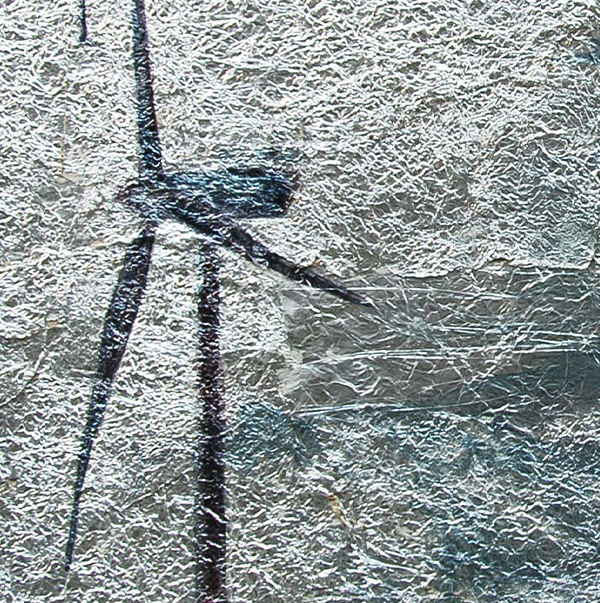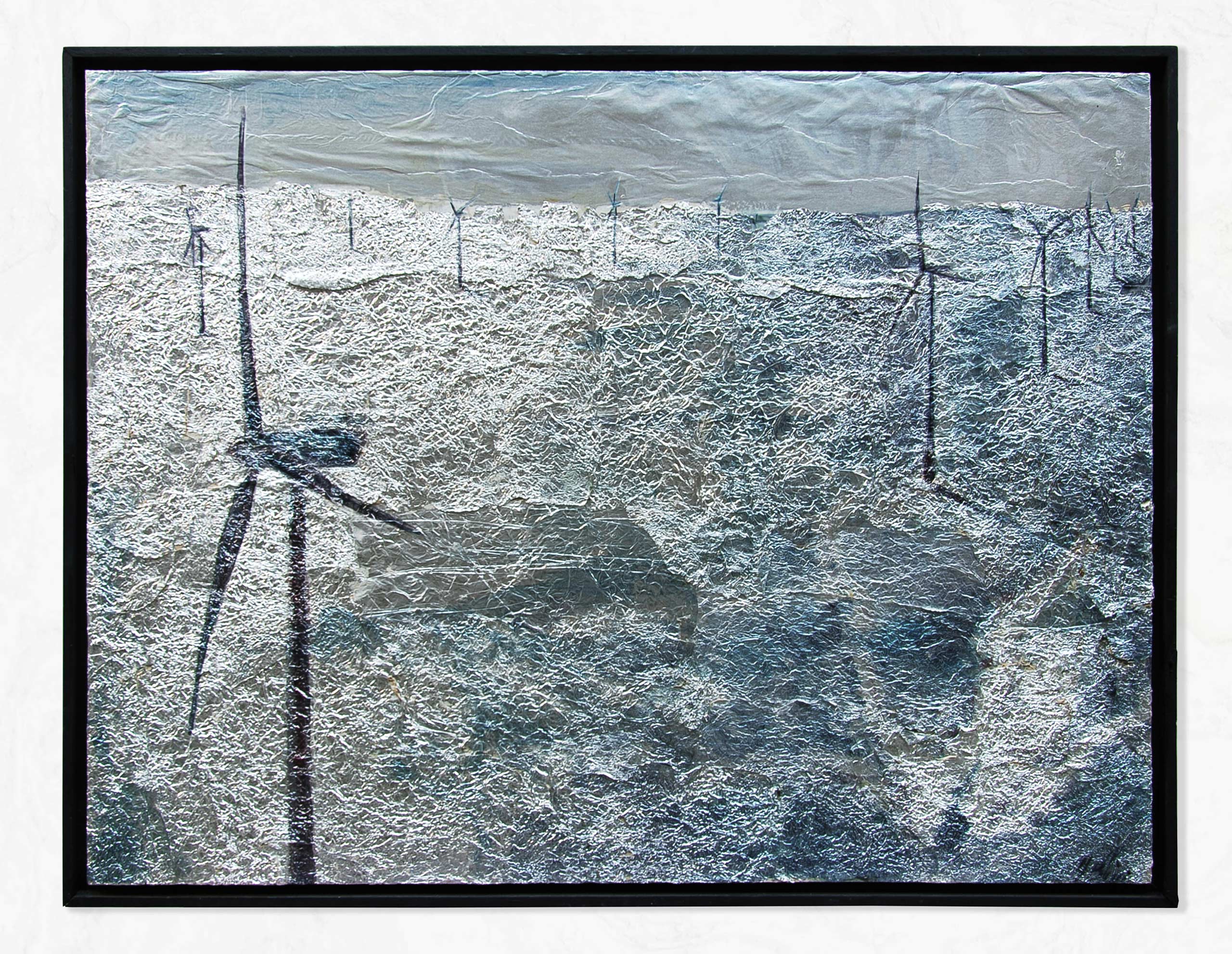COMEL AWARD FINALISTS 2022
Francesca Bruni
Erba (CO), ITALY
www.francescabruni.it
www.francescabruni.it

COMEL AWARD FINALISTS 2022
Francesca Bruni
Erba (CO), ITALY
www.francescabruni.it
www.francescabruni.it
BIOGRAPHICAL NOTES
She was born in Erba (CO) in 1970, she lives and works in Milan. She graduated in painting at the Brera Academy of Fine Arts in Milan in 1993 with 110 cum laude, she is a pupil of Pietro Plescan, and Luigi Fersini. she attended the Luigi Lomanto studio from 1989 to 97 and studied fresco techniques at the studio of the painter Fosco Bertani.
In 1994 she started a mural painting business for individuals, companies, and public places.
In 1997 she joined the Artemisia group (www.artemisia5.it) with which she regularly exhibits in municipalities, castles, and art galleries. Together with Artemisia, she is the cultural partner of the Centro Studi Grande Milano. In 2012-13 she wrote a monthly column in a DE-AR furniture magazine on various painting techniques and decorative murals. Since 1999 she has been teaching oil painting and drawing in private associations in Milan.
ARTWORK IN CONTEST

RIFLESSIONI V EOLICA, 2010
PAINTING - Glazes on aluminium collage on wood
cm 80 x 60
An idea of perpetual movement and a heartfelt appeal to ethical responsibility towards the planet, in which natural elements mix and are enhanced by aluminium, is the personal vision of infinity that Francesca Bruni proposes in Riflessioni V eolica: “The work represents an offshore wind farm built on the sea. With the force of the wind it transforms and is reborn into clean energy countless times, this landscape is a look and a hope that this world will never end “.
AWARDS
COMEL AWARD FINALIST 2022

INTERVIEW
by Ilaria Ferri
I realized early on that the inspirational element of my creativity was light; strong contrasts created interesting, stimulating, and always different new forms
With RIFLESSIONI V eolica participated in the 9th edition of the COMEL Endless Aluminium award. The work represents an imaginary wind farm on the high seas: a landscape made of sky and sea merging into a thousand reflections and a long perspective that fades into the horizon. The work is a wish that renewable energy will be increasingly widespread for the health of our planet and the life of Man on Earth. A more topical theme than ever treated with lightness and positivity, making aluminium an actual natural element that vibrates with light and hope. How did the idea behind this work come about? What inspired you to apply for the COMEL award?
In 2010, I did various works on energy (from solar to geothermal to sea energy). I have always been interested in the issue of making our country more sustainable and livable. I have spent a lot of time in Tuscany, near Larderello, where you can find the largest geothermal power plant in Europe; here, they have managed to channel the boraciferous blowholes and use them to heat the land. Everyone always thought that these power plants disfigured the landscape. Still, I always saw their positive side instead, even aesthetically interesting: the white fumes with their unique and transparent shapes and pipes looked like snakes to me, in the wind power, the blades looked like flowers, and the solar panels like roads in perspective. I entered the COMEL Prize because I have been using aluminum as a collage for a long time, and this competition seemed perfect for me, in addition to the always very inspiring themes. Just this year, the theme matched my energy themes very well.

Riflessioni I - larderelllo collage of glazed aluminium, mixed media, oil and enamels, 80X60 cm
Professor Cristina Muccioli, art critic and lecturer at the Brera Academy, writes about you, "She frescoes walls in the manner of the ancients, and plexiglass boards, aluminium surfaces, mirrors and of course canvases. She uses oil paint but also enamels and acrylics. She mastered the properties of transparency and opacity; she offers of the same color several nuances depending on the chosen material." How does his curiosity about media come about? How do you choose them? Do you have an idea and use a type of medium based on the results you want to achieve, or does the medium itself suggest experimentation and techniques?
I have always liked to experiment and find the most suitable support. Even in the beginning, I used canvases and raw ocumè boards prepared by me, with plaster and glue, to get a rough surface to use the rubbing technique. I am very curious, and when I go to art exhibitions, I love to understand the work I am looking at investigating the used technique, and that's how I learn.
I choose the medium according to the meaning of the work, sometimes I have used black backgrounds specifically to expose negative things, such as when, again on the theme of energy and the environment, I painted an oil tanker sinking in the water or when I painted burning forests with their small animals petrified by fear, or the toxic gas emitted by cars stopped in traffic. When I use aluminium, on the other hand, the message is always positive. I also choose the material according to the idea I want to convey. I chose transparent plexiglass for some paintings precisely because the shapes keep changing the work. The light, being far from the wall, produces a pattern on the wall that is always different and depending on how you move from left to right and the direction of the light. We are constantly changing, and I also wanted to convey that in my works. Similarly, when I use aluminium, depending on whether it is rough, shiny, or matte, and from the direction from which you look at it, you read different images. Light reflects differently on these surfaces, so the work is always different. Sometimes, it is the medium that suggests which technique to use. As in the case of murals, I was working on a concrete wall, and the work would be due over time, so I could not use the 'fresco technique. I researched and eventually experimented with the silicate technique, similar to fresco, but reacting chemically with the support does not create the film.

Controluce XX - oil on board, rubbing technique, 80X60 cm
Your painting path is firmly grounded in figurative art, but the bodies, faces, landscapes, and objects you paint are never naturalistic, or realistic. Art historian and critic Stefano Fugazza has called your painting a modern reinterpretation of expressionism. You stated: "I represent reality not as I see it but as I imagine it." Art is not a narrative of what you see, but a tool to express your ideas, your way of observing and making things your own, isn't it?
Art, for me, is a tool to express my ideas. I take my cue from the reality around me, but then I interpret it and give my own version of it.
In your painting, light has a special importance. You state: "The main interest is the reflection and refraction of natural light on the pictorial surfaces, sometimes smooth and shiny and others opaque or rippled, creating continuous mutations." you make remarkable use of chiaroscuro, which makes the figures depicted extremely expressive and vivid. Do you remember when you realized that light could be the trigger for your creativity and the engine of your artistic journey?
I realized early on that the inspirational element of my creativity was light; when I was at the Academy and attended the studio of painter Luigi Lomanto, strong contrasts created interesting, stimulating, and always different new forms.

Controluce XXVI - oil on canvas, 60x60 cm
You also do interior decoration, wall painting, trompe l'oeil, commissioned portraits, and teach courses in oil painting and drawing. How does it change how you work in the different areas you are involved in?
In the area of teaching, I don't change much; I try to teach all the techniques I know and let my students experiment as much as possible because it is in doing that creativity develops and grows. I stimulate them to observe the real thing and find their original point of view, while I always try to find symbolic meanings in the work for decorations and murals. Sometimes, I sell pure execution because I love painting creating new colors, shapes, and challenges. I adapt to thinking that doing is always a stimulus to improve technique and experiment with different things. Even if they are not the images I would like, I satisfy the client's ideas, and their satisfaction stillgratifies me.

Passaggi di luce XV - self-portrait - 50X70 cm
Since 1994, you have been a member of the Artemisia Association. This all-female art group proposes the idea of Art as a confrontation with the other: the five women artists who are members of the group each deal with the same subject in their own way, according to their own way of feeling and expressing themselves. What does it mean to you to be part of this group?
Being part of the Artemisia group is a stimulus for creativity to look for new things and ideas and always try to do the best. We have a shared vision of Art and regard it with seriousness, professionalism, and humility. We all came out of the same atelier. We want to convey the love of Art and the diversity that each human being possesses. Artemisia, for me, is Art.

